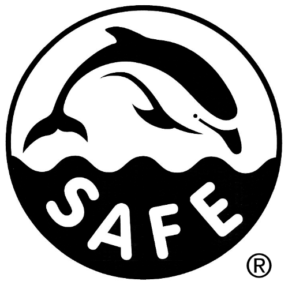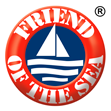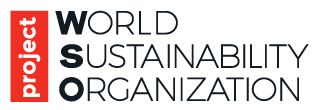Save the Dolphin-Safe Campaign
Incidental bycatch of dolphins by purse seining tuna fishermen has resulted in the deaths of millions of dolphins over the last century. It is estimated that 7 million dolphins were killed in the tuna nets from the 50s to the 80s. International conservation efforts, in particular the Earth Island Institute Dolphin-Safe tuna project (www.dolphinsafetuna.org) have dramatically reduced the slaughter of dolphins by tuna fleets, but some rogue fishing fleets continue to indiscriminately target dolphins during their fishing operations.
The Problem
In the Eastern Tropical Pacific Ocean, yellowfin tuna swim below pods of dolphins, an association which has intrigued scientists for decades but is now believed to be related to reducing the tuna’s risk of predation when they are forced to swim closer to the surface in warm waters due to oxygen limitations in hypoxic deeper waters (Scott et al., 2012). Tuna fishermen have exploited this phenomenon for decades, using dolphins to help them search for schools of tuna. While the dolphins help the tuna fishermen to locate and round up their catch, unfortunately, this doesn’t always end well for the dolphins. As fishing fleets became more and more greedy they started stepping up this practice, intentionally sending out speedboats and helicopters with explosives to chase down dolphins and encircle them as the fishing crew dropped their purse seine nets around both the tuna and the dolphins. Purse seine nets are huge nets — often stretching for 1,500 -2,500 meters in length and to a depth of 150-250 meters — with floats on the top and a drawstring on the bottom.
The captured dolphins are hauled through the water back onto the vessel along with the tuna as they have no way of escaping the nets. Millions of dolphins have drowned in tuna nets as a result of indiscriminate tuna fishing practices that intentionally chase and capture dolphins in purse-seine nets in order to catch tuna that swim amongst them.
Thankfully the intentional chasing and capture of dolphins is now outlawed by both US and international regulatory authorities. However, Mexico, Venezuela, Ecuador and Colombia continue to use indiscriminate fishing practices to the detriment of dolphins.

Environmental Consequences
By the 1970s it is estimated that over 100,000 dolphins were being killed by tuna fleets annually, resulting in more than 7 million dolphins being killed by purse seine fisheries in the Eastern Tropical Pacific Ocean from 1959-1976. The dolphin species most affected include the pantropical spotted dolphin (Stenella attenuata), spinner dolphin (S. longirostris) and, to a lesser extent, the common dolphin (Delphinus delphis).
Possible Solutions to Save the Dolphin
Purse seine operations can be made more dolphin-friendly, by implementing additional measures to prevent the incidental bycatch of dolphins in their nets. Stiffer regulations and pressure by consumer groups have been effective at encouraging dolphin-friendly fishing practices. In 1972, the US Marine Mammal Protection Act was passed, which made provision for significantly reducing dolphin bycatch, and ultimately led to regulations being introduced to force tuna fleets to use dolphin-friendly practices. As a result of international conservation efforts, the Earth Island Institute Dolphin-Safe tuna project and regulations, dolphin mortality rates have dropped significantly from 100,000 a year in the 1970s to less than 3000 in 1999, declining further to around 1000 per year more recently. Currently all three of the affected species are listed as of Least Concern on the IUCN Redlist of Threatened Species. While this is a resounding success story, 1000 dolphins a year is still 1000 dolphins too many, and these deaths can be avoided. Solutions to help reduce the killing of dolphins in tuna nets include:
- Improved Fishing Methods — Modifications of fishing gear and procedures that do not require chasing of dolphins. However, the use of alternative methods that could bycatch sharks and some turtles, unless non-entangling FADs are used with ropes and canvas. Friend of the Sea requires its approved fleets to implement these measures.
- Onboard Observers — Monitoring of fishing operations and recording of dolphin mortality to ensure that no nets are set on dolphins and that dolphin safe practices are followed onboard fishing vessels in compliance with Dolphin Safe tuna laws.
- Dolphin Safe Label — Since consumer purchasing power can be very persuasive, the introduction of a Dolphin Safe label for tuna that has been caught without any dolphins being intentionally chased, encircled, or killed lets consumers make informed decisions when purchasing tuna products. Currently, the United States requires all tuna (including tuna imported from other countries) to meet Dolphin Safe requirements. Pressure can be put on other countries to follow suit, which will in turn force tuna fleets to use dolphin safe procedures during fishing operations.
WSF Activities and initiatives
The World Sustainability Foundation’s Friend of the Sea project certification program promotes the responsible harvesting of marine resources, including tuna. In order to qualify for certification, Friend of the Sea tuna fleets must use sustainable fishing practices that are dolphin-safe according to the Earth Island Institute (www.earthisland.org). An additional requirement for certification requires tuna fleets to use non-entangling Fish Aggregating Devices (FADs) that do not endanger other marine life, and to report on the use of FADs during fishing operations.
The World Sustainability Foundation’s Friend of the Sea program strongly supports the Earth Island Institute’s dolphin conservation efforts conducted under their International Marine Mammal Project. The Earth Island Institute monitors more than 700 tuna companies around the world, inspecting fishing vessels, storage facilities and canneries to ensure that tuna companies comply with Dolphin-Safe certification standards.
Call to action to save the dolphin
- Buy only Dolphin-Safe tuna carrying the Dolphin-Safe tuna logo registered by the Earth Island Institute
- Choose Friend of the Sea certified tuna and other seafood as they are all compliant with the Dolphin-safe tuna logo.
- Be aware that the MSC certified tuna from the Mexican tuna fleet is NOT Dolphin-Safe according to the Earth Island Institute so it will not help us to save the dolphin








